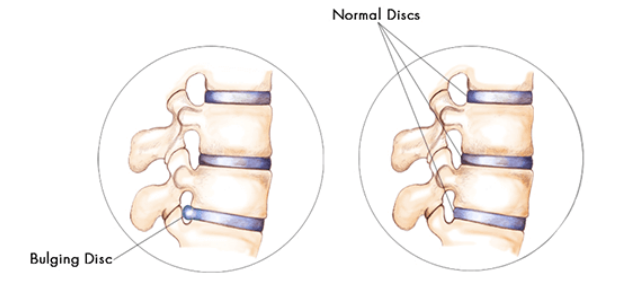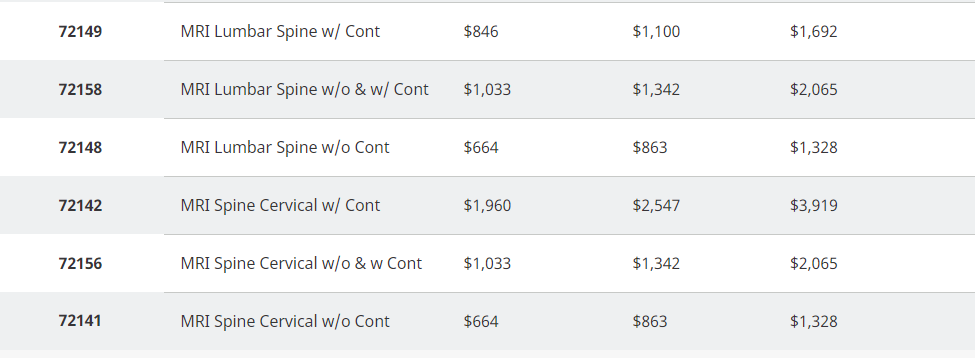Five Reasons You Don't Need an MRI For Lower Back Pain
Would it surprise you to know that the medical guidelines set by American Academy of Family Physicians recommends NOT getting an MRI for lower back pain within the first six weeks? They've concluded that "imaging of the lower spine within the first six weeks does not improve outcomes, but does increase cost". And yet despite this advice, the number of MRI's for lower back pain has increased by 50% over a 21 year span. Why would that be?
The traditional medical system doesn't have a lot of answers for lower back pain (aside from pills, injections and surgery). Which is part of the reason why MRI's are heavily relied upon even when doctors know they don't provide much benefit. When a patient comes into a clinic in pain they are expecting answers. It's often times easier to simply order an MRI and wait for the results.
But placing too much emphasis on MRI findings can damage patients' expectations and lead to worse outcomes for the patient for reasons we'll discuss below.
Five Reasons You Don't Need An MRI For Lower Back Pain
1. MRI Findings Don't Show The Cause of Lower Back Pain
Most patients request an MRI to help determine the cause of their back pain. Unfortunately, most findings of MRI are incidental. Meaning they are a common part of the aging process and have no relation to the pain at all. It's common to find disc bulges, arthritis, and disc degeneration on MRI's in adults without back pain. It's also common to have back pain with no disc bulges on MRI.
Not only do MRI's not show the cause, but findings vary based on the radiologist reading your image. Studies repeatedly show interpretive errors of the same spine image depending on who reads it. As a result, "where a patient obtains their MRI examination and which radiologist interprets the examination have a direct impact on radiological diagnosis".
Disc bulges are a normal part of the aging process and are also present in adults without lower back pain.
2. MRI Findings Don't Change Treatment
There's a general rule in the medical world that diagnostic testing should only be done if it changes the course of your treatment. For example, an X-Ray may be indicated after a major trauma if you suspect a fractured bone. This is because you'd treat a fracture differently than other causes of pain.
In the case of lower back pain, MRI findings would rarely change the treatment. Disc bulges, herniations, arthritis found on imaging are going to be best treated through conservative therapies. Chiropractic, physical therapy, and strength training are the best options for back pain, regardless of what your MRI shows. If the treatment is going to be the same, why waste the time and money on an MRI?
Regardless of MRI findings, the best treatment for lower back pain is movement and strength training.
3. Used To Justify Unneccesary and Harmful Surgery
MRI's are usually the first step on a patient's path to surgery. Whether driven by financial incentives or a desire to help, doctors often use MRI findings as a justification for surgery. When it comes to solving lower back pain, surgery is rarely necesary and usually hurts more than it helps.
Cutting through skin, muscle, fascia, and nerves to get to the spine often leads to more pain. Prolonged periods of inactivity and spinal fusion change the way your body moves leading to pain elsewhere in the body. Surgery never fixes the causes of lower back pain and is why studies continually show surgery as ineffective in the long term treatment of back pain.
MRI findings are often used to justify surgery. Surgery causes a host of other problems are rarely fixes the underlying cause of pain.
4. Waste Of Time And Money
Because MRI's provide little to no valuable information on the cause and treatment of lower back pain, they end up being a waste of time and money. What if, instead of waiting for the results of an MRI you got started on proven and effective treatments for back pain earlier? What if, instead of spending $100's to $1000's of dollars on imaging, you invested that money on working with a back pain specialist who could get you relief without pills, injections, or surgery? Skipping the MRI could save you a ton of money and help you make a faster recovery
Average cost for spinal MRI. Could this time and money be better spent?
5. Doesn't Improve Patient Outcomes
Most importantly, MRI's have shown not to improve patient outcomes for those with lower back pain. The goal of any treatment plan should be to ease pain, regain function, and improve quality of life. The medical guideline has been clear for a long time and backed by studies demonstrating that routine imaging for low back pain does not improve patient's pain, function, or quality of life. If the goal is really to improve patient outcomes it's time we rely less on imaging and focus on therapies that we know work.
In conclusion, we don't need more MRI's to solve lower back pain. A better approach is to utilize conservative therapies to speed the healing process. Combined with exercise programs to limit the impact on your spine will lead to longer term solutions to back pain. To learn more about improving movement and strength to solve years of chronic back pain, download our free guide ‘Solving Pain With Strength’.






